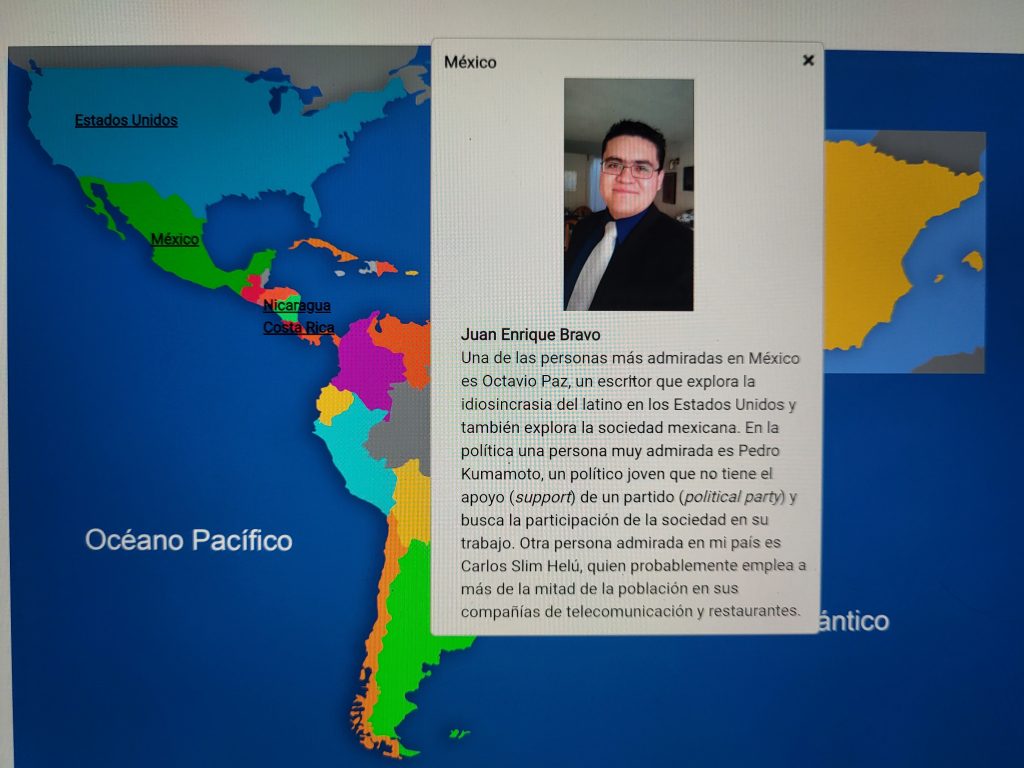Interpretive, Interpersonal, and Presentational Modes of Communication
Exploring Culture
During my first semester of Spanish I not only learned the basics of the language but I became familiar with the cultures that speak the language. It was interesting how similar the Spanish cultures are from Europe to south America. I before I studies that different South American countries I assumed they would be more like American then Spain, I was wrong. I really liked the idea of having a siesta and spending more quality time enjoying life and less stress about work and earning money.
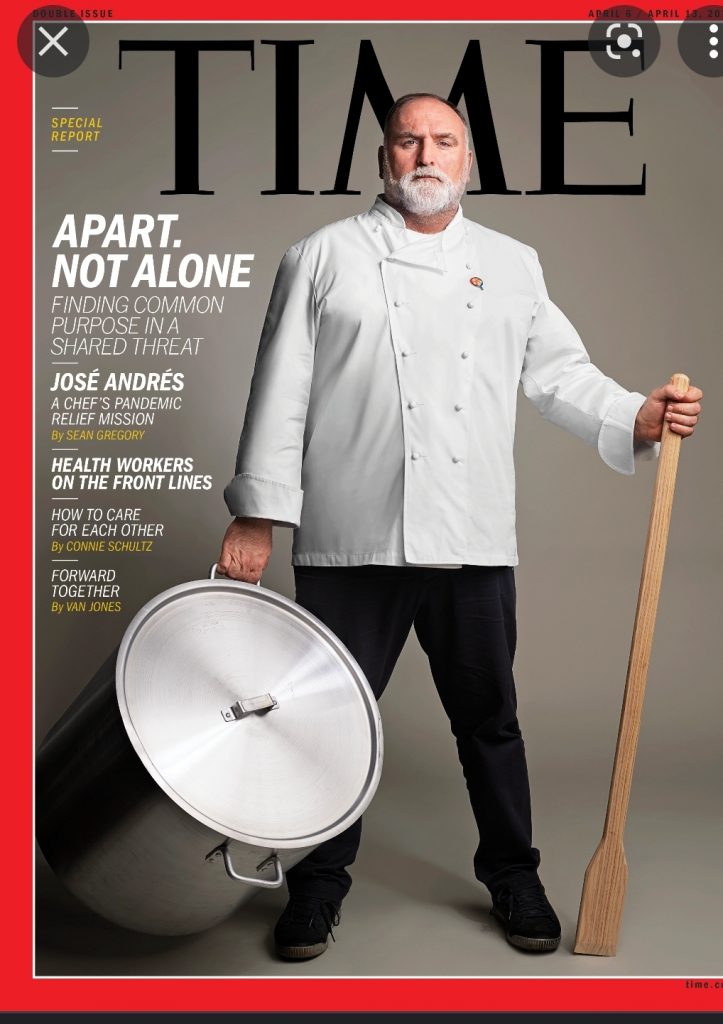
Engaging in Communities
I have recently gone from being completely involved the US Military lifestyle to being a student at Old Dominion University. Even though the last Military institution I was on is only a few miles from ODU, there are many of the components of these communities that are complete opposites. The biggest differences are the ages and political views among the individual societies in these two completely different communities. I am fortunate to be able to explore and understand both of these styles of living and believing.
Interpersonal Communication
In the Lingarolearning, Contrasena book that we used there were many Conversar activities that we did in class. We would learn and practice at home but then in class our professor would do a quick review and guide us in talking exercises. We would then be allowed to practice conversation with our classmates and Professor.
Presentational Speaking
I have a high school daughter who has been taking Spanish for 7 years. She would help me practice my speaking at home. One of my presentational speaking projects was to interview someone, I interviewed my daughter. Another project that we did was a video about our campus. We also did many speaking exercises within our book.
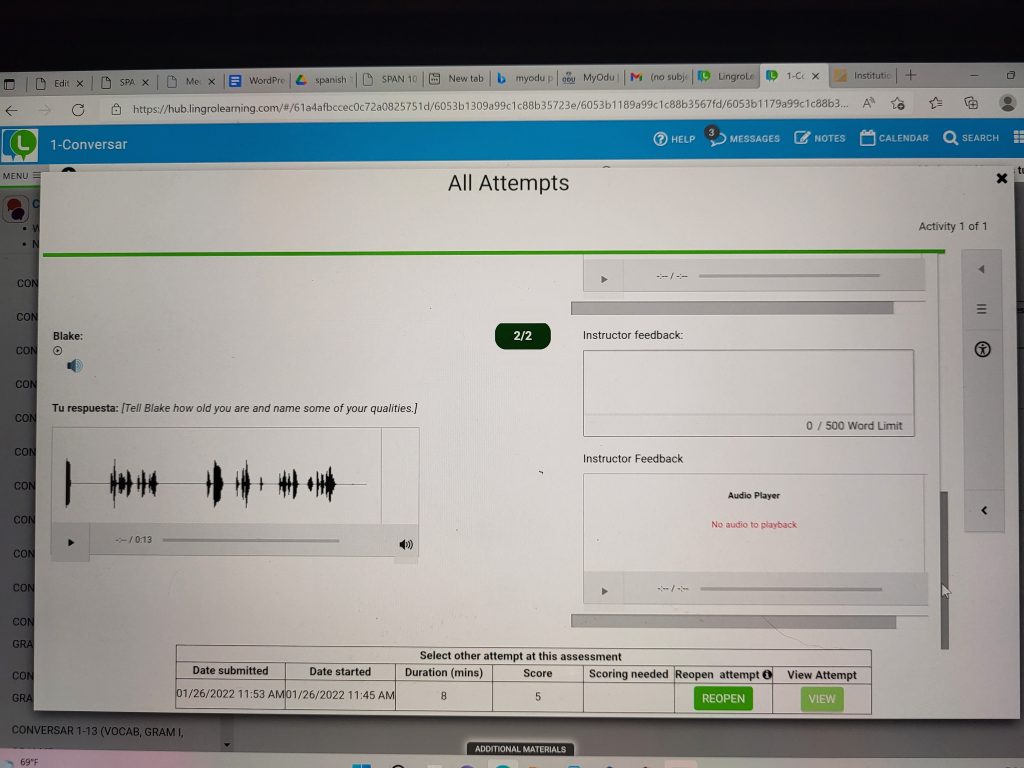
Presentational Writing
We did writing exercises in almost all of our units. We were required to complete pre-written paragraphs, write small sentences and for unit projects we had to write papers about ourselves and about our weekly schedule. In the beginning it was extremely difficult for me to write and understand the concepts. As class went on and we learned more vocabulary and grammar rule, writing became easier to understand and to write. The small words (a, y, la, al, un una, uno, es, etc…) began to have meaning and writing and reading became more fun.
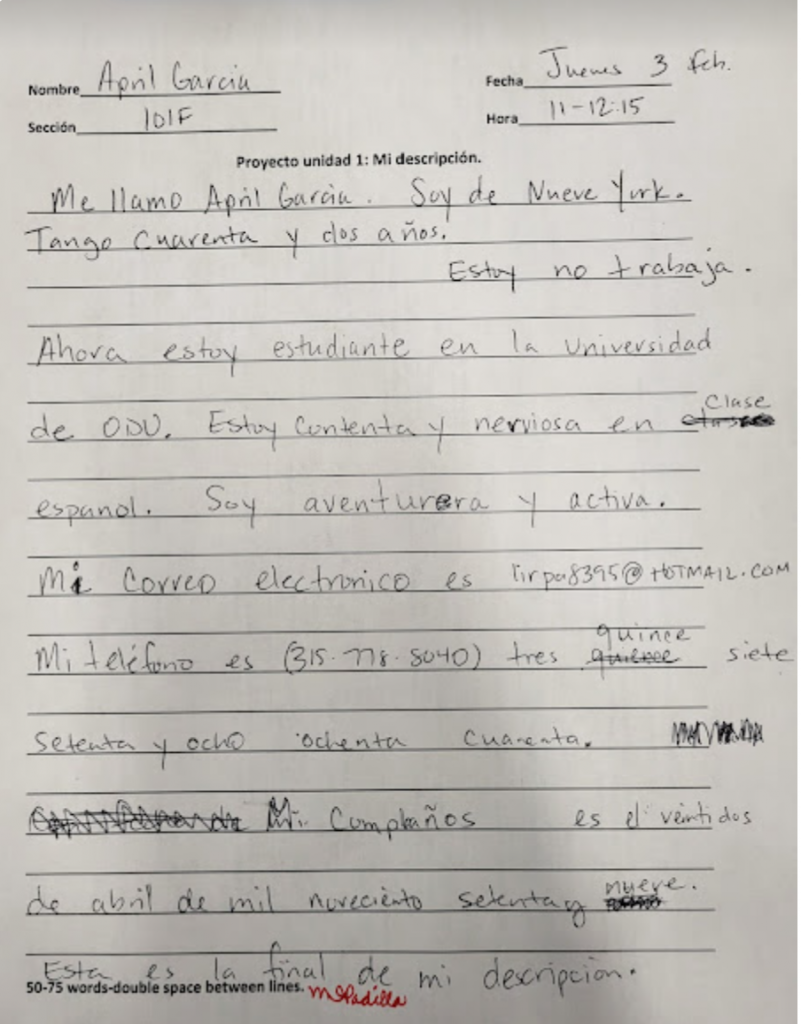
This is my very first graded writing project that I have ever written in Spanish.
Interpretive Listening
Most if not all Units in the class book began with a couple shorts video to explain vocabulary or grammar that we would use within the unit. We also listen to our professor speak in class as well as classmates. I would listen to podcasts and Latin radio outside of class to get more familiar with the sounds of the language.
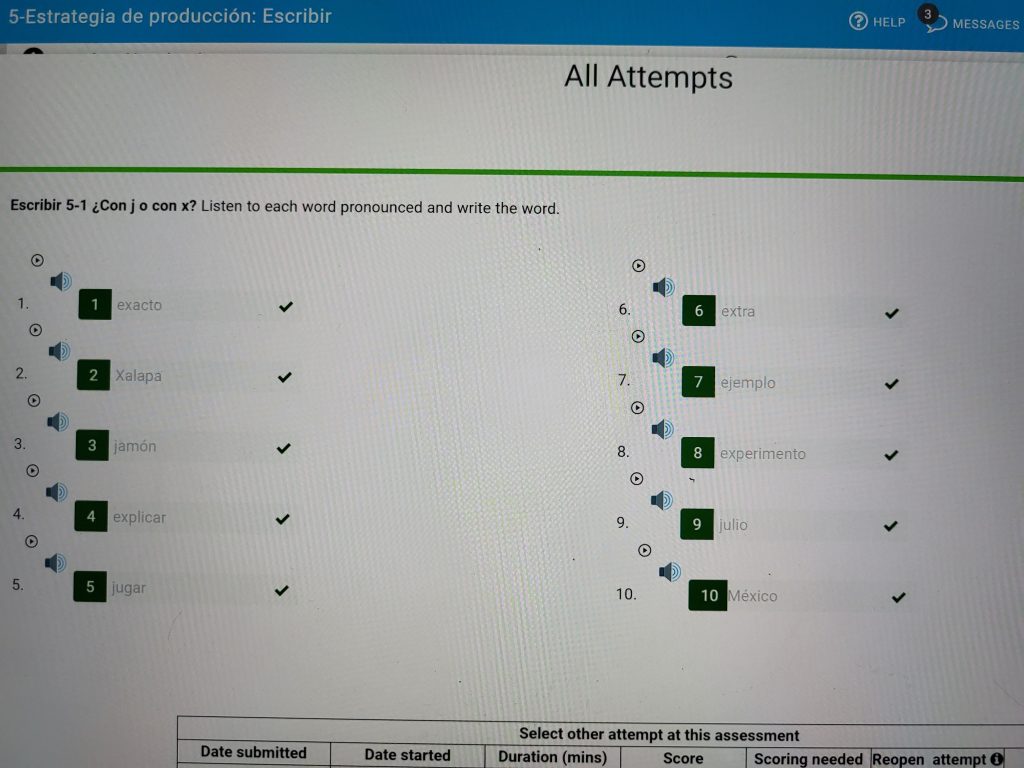
Interpretive Reading
We would do many small reading activities in the book, and practice exercises in class. We read descriptions, letters, how people lived in other countries and many other smaller readings throughout each chapter.
